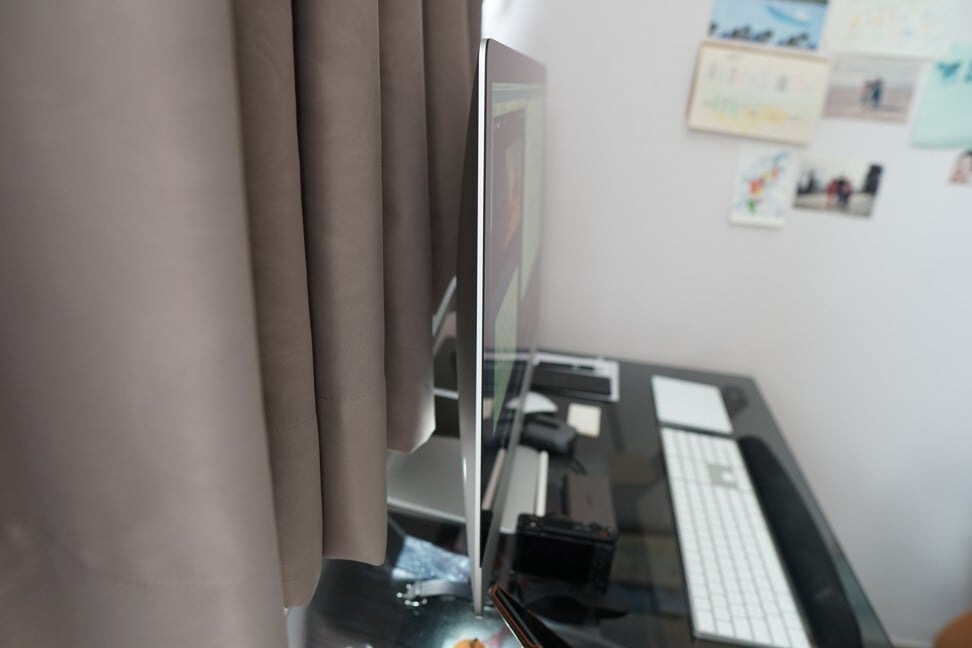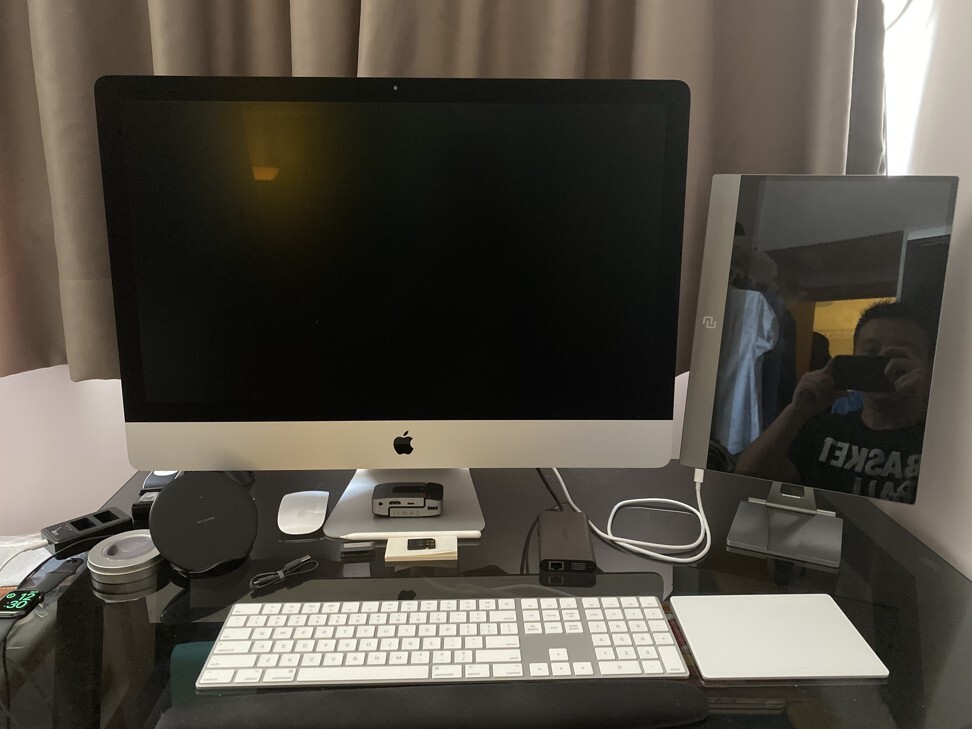
Apple’s latest computer, an update of the 27-inch iMac, doesn’t bring industry-shaking improvements the same way some of its recent products – such as the iPhone X or iPad Pro – have.
However, the release is noteworthy and, perhaps, historic for two reasons: it is likely to be the last Mac to run on an Intel chip, and its upgrades seem to cater specifically to this work from home, pandemic era. Tech historians will remember this machine for capturing the 2020 zeitgeist.
Hardware and design
In terms of overall design the iMac is similar to previous models. It is an entire computer stored inside a monitor-shaped machine. The screen is stunning, a 5K resolution panel that pumps out 14.7 million pixels and has the ability to differentiate over a billion colours.

This year the screen can come with optional nano-texture glass, which gives the screen a matte finish that significantly reduces reflection and glare. While other matte displays on the market apply the coating over the glass, Apple applies the anti-reflective material into the glass at a nano level.
This allows Apple’s screen to achieve a matte finish without sacrificing brightness and contrast accuracy, which is a problem on my matt Dell monitor.
The speakers, mics and webcam have also improved. The speakers pump out rich and nuanced sound with a noticeable bass kick, and the triple mic array records crisp audio and can intelligently detect my calls for Siri from anywhere in the room.

But the biggest bump in performance comes in the webcam: it’s a 1,080p camera that can auto adjust exposure and detect faces to lock focus.
It’s by far the best webcam I’ve seen that’s natively built into a computer, although that doesn’t say much, because the bar for computer webcams has been notoriously low. Still, if you’re someone who participates in video calls or live streams, you’ll notice the superior video and audio quality.
The processors have had the annual spec-boost: the iMac runs on Intel’s 10th generation Comet Lake processors and AMD Radeon Pro 5000 series graphics. As mentioned, this is likely Intel’s farewell run on the Mac, as Apple will begin using its own chips on all of its computers starting the end of 2020.

Software and features
Even as someone who’s not totally on #TeamApple (I prefer Android over iOS on my mobile device), I find MacOS far superior to Windows. Animations are smoother, trackpad gestures superior, and it just has a more pleasing aesthetic.
New to this year’s iMac is Apple’s “TrueTone” display, meaning the screen adjusts colour temperature according to the lighting situation in your physical surroundings. It’s not a must-have feature, but nice to have nonetheless.

Performance
My unit runs on the highest-end, eight-core, i9 processor, though with just a middle-of-the-road 32GB of RAM (the machine can max out up to 128GB). But hyper threading, which allows each core to run two threads at once, along with the 5.0Ghz turbo boost really enhance performance beyond what most average users would ever need.
I edited a 4K video with a multilayer timeline on Final Cut Pro and was able to scrub through the timeline rapidly without stutter. Then when it came time to export, a nine-minute 4K video was processed in under five minutes. During the export period, I even purposely ran other apps to see if I could cause stutters, and the machine powered through everything I threw at it.
With the 5K screen and excellent speakers, the machine is also ideal for watching movies.

Conclusion
The 27-inch iMac offers a great computing experience for those who want an iMac. However, this machine belongs in an increasingly shrinking no-man’s land.
The portable MacBook Pros (and even iPad Pros) have become so powerful that they can handle many pro-level creative tasks. And the most demanding of creative professionals (Hollywood video editors or YouTube influencers, for example) would go for Apple’s highest tier Mac Pro series.
As usual with Apple machines, this 27-inch iMac is not cheap.
The base model with six-core i5 and just 8GB of RAM and 256GB of SSD storage starts at HK$13,899/US$1,793. The model I’m reviewing with eight-core i9, 32GB RAM and 1TB SSD storage costs HK$34,299/US$4,425. The price for a truly maxed out machine with 128GB RAM and 8TB of storage is HK$66,549/US$8,586.
Did you know that China supplies 40% of the world’s active pharmaceutical ingredients (API) for drug manufacturing? Learn what other ways local healthcare players are expanding their global footprint from the China Healthcare Report, brought to you by SCMP Research, and get a comprehensive industry review and insights on Covid-19 induced market shifts. and get a 30% discount before 30 September 2020. You will also receive access to 6 closed-door webinars led by China healthcare’s most influential C-suite executives.
From our archive







